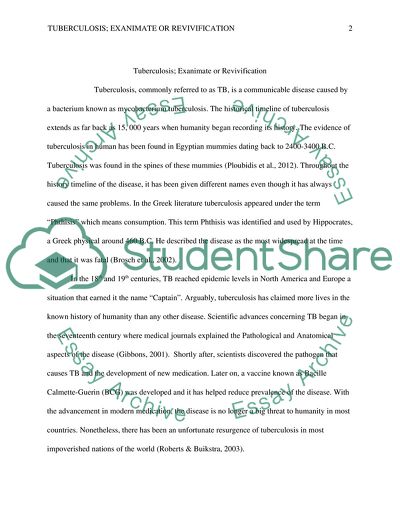Cite this document
(Tuberculosis as a Serious Disease Coursework Example | Topics and Well Written Essays - 2000 words, n.d.)
Tuberculosis as a Serious Disease Coursework Example | Topics and Well Written Essays - 2000 words. Retrieved from https://studentshare.org/health-sciences-medicine/1808246-tuberculosis-exanimate-or-revivification
Tuberculosis as a Serious Disease Coursework Example | Topics and Well Written Essays - 2000 words. Retrieved from https://studentshare.org/health-sciences-medicine/1808246-tuberculosis-exanimate-or-revivification
(Tuberculosis As a Serious Disease Coursework Example | Topics and Well Written Essays - 2000 Words)
Tuberculosis As a Serious Disease Coursework Example | Topics and Well Written Essays - 2000 Words. https://studentshare.org/health-sciences-medicine/1808246-tuberculosis-exanimate-or-revivification.
Tuberculosis As a Serious Disease Coursework Example | Topics and Well Written Essays - 2000 Words. https://studentshare.org/health-sciences-medicine/1808246-tuberculosis-exanimate-or-revivification.
“Tuberculosis As a Serious Disease Coursework Example | Topics and Well Written Essays - 2000 Words”. https://studentshare.org/health-sciences-medicine/1808246-tuberculosis-exanimate-or-revivification.


